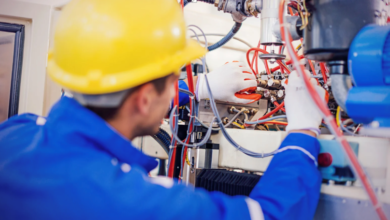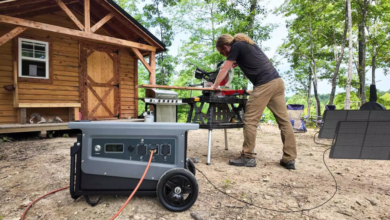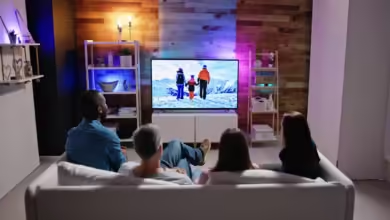
How to Calibrate an Infrared Digital Thermometer for Precise Results
Understanding Infrared Thermometry
Infrared digital thermometers have revolutionized temperature measurement across countless industries and applications. These sophisticated instruments detect thermal radiation emitted by objects and convert this energy into precise temperature readings. Unlike traditional contact thermometers that require physical touch, infrared thermometers measure temperature from a distance, making them invaluable for applications where contact measurement is impractical, dangerous, or would contaminate the sample.
The fundamental principle behind infrared thermometry lies in the Stefan-Boltzmann law, which states that all objects with temperatures above absolute zero emit electromagnetic radiation. The amount and wavelength of this radiation directly correlate to the object’s temperature. Modern infrared thermometers utilize advanced sensors, typically thermopiles or pyroelectric detectors, to capture this radiation and convert it into electrical signals that are then processed and displayed as temperature readings.
However, the accuracy of these measurements depends heavily on proper calibration. Even the most sophisticated infrared thermometer can provide misleading results if not correctly calibrated to account for various factors including emissivity, environmental conditions, and instrument drift over time.
The Importance of Proper Calibration
Calibration represents the cornerstone of accurate temperature measurement. When an infrared digital thermometer leaves the manufacturing facility, it undergoes initial calibration against known temperature standards. However, this factory calibration may not account for the specific conditions and requirements of your particular application. Furthermore, electronic components naturally drift over time due to aging, thermal cycling, and environmental exposure.
Proper calibration ensures that your infrared thermometer provides readings that are traceable to national or international temperature standards. This traceability becomes crucial in regulated industries such as pharmaceuticals, food processing, and manufacturing, where temperature accuracy can impact product quality, safety, and regulatory compliance. Inaccurate temperature measurements can lead to rejected batches, failed inspections, compromised product safety, and significant financial losses.
Moreover, calibration verification helps identify when an instrument is no longer performing within acceptable tolerances, preventing the propagation of measurement errors throughout your processes. Regular calibration also extends the useful life of your equipment by identifying potential issues before they result in complete instrument failure.
Types of Infrared Digital Thermometers
Understanding the specific type of infrared thermometer you’re working with is essential for proper calibration. Handheld spot thermometers represent the most common variety, designed for quick point measurements across a wide range of applications. These instruments typically feature adjustable emissivity settings and various measurement modes, making them versatile but requiring careful calibration for optimal performance.
Scanning thermometers offer the ability to measure temperature across a broader area, providing maximum, minimum, and average temperature readings within the scanned region. These instruments require specialized calibration techniques to ensure accuracy across their entire measurement field.
Fixed-mount infrared thermometers are permanently installed in industrial processes for continuous monitoring. These instruments often integrate with control systems and require more sophisticated calibration procedures due to their critical role in process control and safety systems.
Thermal imaging cameras, while more complex, operate on similar infrared principles but capture temperature data across thousands of measurement points simultaneously. Calibrating these systems requires specialized blackbody sources and comprehensive procedures to ensure accuracy across the entire detector array.
Pre-Calibration Preparations
Before beginning the calibration process, thorough preparation ensures accurate results and prevents common errors. Start by reviewing the manufacturer’s specifications and recommended calibration procedures for your specific instrument model. Understanding the instrument’s measurement range, accuracy specifications, and environmental operating conditions provides the foundation for developing an appropriate calibration strategy.
Clean the instrument’s optical components using appropriate cleaning materials and techniques. Dust, moisture, or contamination on the lens or optical path can significantly affect measurement accuracy and calibration results. Use only recommended cleaning solvents and lint-free materials to avoid damaging delicate optical surfaces.
Verify that the instrument’s battery is fully charged or that stable power is available throughout the calibration process. Voltage variations can affect measurement accuracy and lead to inconsistent calibration results. Some instruments may require a warm-up period before achieving stable operation, so consult the manufacturer’s recommendations for proper warm-up procedures.
Document the instrument’s current configuration settings, including emissivity values, measurement modes, and any correction factors currently applied. This documentation serves as a baseline and helps identify which parameters may need adjustment during calibration.
Essential Equipment for Calibration
Successful infrared thermometer calibration requires specialized reference equipment that provides known, stable temperature sources. Blackbody calibration sources represent the gold standard for infrared thermometer calibration. These devices create surfaces with known emissivity characteristics and precisely controlled temperatures, providing ideal reference targets for calibration procedures.
Portable blackbody sources offer convenience and flexibility for field calibrations, typically covering temperature ranges from ambient to several hundred degrees Celsius. These units often feature multiple cavity sizes to accommodate different thermometer measurement spots and viewing angles.
For more demanding applications, laboratory-grade blackbody sources provide superior temperature stability and uniformity. These precision instruments can maintain temperature stability within millikelvin levels and offer traceability to national temperature standards through calibration certificates.
Temperature-controlled water baths and dry-block calibrators can serve as alternative reference sources for certain applications. While not ideal for all infrared thermometer types, these devices can provide adequate reference temperatures when used with appropriate emissivity targets.
A calibrated reference thermometer, preferably a platinum resistance thermometer (PRT) with current calibration certification, serves as the temperature standard for the calibration process. This reference instrument should have accuracy specifications at least four times better than the infrared thermometer being calibrated.
See also: How to Automate Your Home With Smart Devices in 2025?
Step-by-Step Calibration Process
The calibration process begins with establishing a stable measurement environment. Temperature fluctuations, air currents, and electromagnetic interference can all impact calibration accuracy. Ideally, perform calibrations in a controlled laboratory environment with stable ambient temperature and minimal air movement.
Position the infrared thermometer at the manufacturer’s recommended distance from the calibration source. This distance, often specified as a ratio such as 12:1, ensures that the instrument’s field of view completely encompasses the target area without including surrounding surfaces that might affect the measurement.
Set the blackbody source to the first calibration temperature, typically at the lower end of your intended measurement range. Allow sufficient time for the source to reach thermal equilibrium, which may require 15 to 30 minutes depending on the source type and temperature differential.
Monitor the reference temperature using your calibrated standard thermometer, ensuring that the blackbody temperature has stabilized within acceptable limits before taking measurements. Temperature stability criteria should be established based on your accuracy requirements, typically within 0.1°C or less for precision calibrations.
Record the infrared thermometer reading along with the reference temperature and environmental conditions. Take multiple measurements at each calibration point to assess repeatability and identify any drift or instability in either the instrument or reference source.
Repeat this process at multiple temperature points spanning your intended measurement range. The number of calibration points depends on your accuracy requirements and the instrument’s linearity characteristics, but typically includes at least five points distributed across the measurement range.
Temperature Reference Standards
The accuracy of your calibration depends entirely on the quality and traceability of your temperature reference standards. National Institute of Standards and Technology (NIST) traceable calibrations provide the highest level of confidence in measurement accuracy. These calibrations establish a documented chain of comparisons linking your reference standards to primary national standards.
Platinum resistance thermometers represent the most accurate and stable temperature sensors for calibration work. These instruments can achieve uncertainties of a few millikelvin when properly calibrated and used within their specified conditions. However, they require careful handling and protection from contamination or mechanical shock that could affect their calibration.
For less demanding applications, high-quality thermocouples or thermistors may provide adequate reference accuracy. These sensors offer advantages in terms of response time and ruggedness but generally sacrifice some accuracy compared to PRTs.
Regular recalibration of reference standards maintains their accuracy and traceability over time. The frequency of recalibration depends on the stability characteristics of the sensor type, usage conditions, and accuracy requirements of your application.
Environmental Factors Affecting Accuracy
Environmental conditions significantly impact infrared thermometer accuracy and must be carefully controlled during calibration. Ambient temperature variations can affect both the instrument’s internal electronics and the optical characteristics of the measurement path. Most infrared thermometers include internal temperature compensation, but extreme temperature variations can exceed the compensation range.
Relative humidity affects the transmission characteristics of the atmosphere between the thermometer and target. Water vapor absorbs infrared radiation at specific wavelengths, potentially causing measurement errors. While this effect is typically minimal over short measurement distances, it becomes more significant for longer measurement paths or in high-humidity environments.
Air currents and convection can affect the temperature distribution across the calibration source surface, leading to measurement uncertainties. Even small air movements can create temperature variations that exceed the accuracy requirements of precision calibrations. Enclosing the calibration setup or using windshields helps minimize these effects.
Background radiation from surrounding objects can influence measurements through reflections from the target surface. Blackbody sources minimize this effect through their high emissivity characteristics, but careful attention to the measurement environment remains important for achieving the best calibration accuracy.
Common Calibration Errors and Solutions
Distance-to-spot size ratio violations represent one of the most frequent calibration errors. When the measurement distance is too close or too far from the manufacturer’s specifications, the instrument’s field of view may not properly align with the calibration target. This can result in measurements that include background temperatures or miss the intended target area entirely.
Emissivity mismatches between the calibration source and actual measurement targets can lead to systematic errors that persist after calibration. While blackbody sources provide nearly ideal emissivity characteristics, real-world measurement targets may have significantly different emissivity values. Understanding and accounting for these differences becomes crucial for achieving accurate measurements in practice.
Inadequate thermal equilibrium time represents another common source of error. Temperature sources require time to reach stable conditions, and rushing the calibration process can result in measurements taken before the system has reached equilibrium. The time constant varies with the thermal mass of the calibration source and the magnitude of temperature changes.
Optical contamination or misalignment can cause calibration errors that may not be immediately apparent. Regular cleaning and inspection of optical components helps prevent these issues, while careful alignment procedures ensure that the measurement beam properly targets the calibration source.
Maintaining Calibration Over Time
Calibration represents a snapshot of instrument performance at a specific point in time. Electronic components naturally drift due to aging, thermal cycling, and environmental exposure, gradually affecting measurement accuracy. Establishing appropriate calibration intervals balances measurement accuracy requirements with calibration costs and instrument availability.
Drift monitoring between formal calibrations helps identify instruments that may be exceeding acceptable accuracy limits. Simple check procedures using stable reference sources can flag instruments requiring immediate recalibration or adjustment. These checks should be documented and trended over time to identify patterns or accelerated drift rates.
Environmental storage and handling conditions significantly impact calibration stability. Extreme temperatures, humidity, vibration, and contamination can all accelerate drift rates or cause sudden accuracy shifts. Following manufacturer recommendations for storage and handling helps maintain calibration accuracy between formal calibration intervals.
Documentation systems should track calibration history, drift trends, and any adjustments or repairs performed on each instrument. This historical data helps optimize calibration intervals and identify instruments with unusual stability characteristics.
Professional vs. DIY Calibration
The decision between professional calibration services and in-house calibration depends on several factors including accuracy requirements, calibration frequency, available resources, and regulatory requirements. Professional calibration laboratories offer advantages in terms of equipment quality, traceability, expertise, and documentation systems.
Accredited calibration laboratories operate under strict quality systems and maintain measurement traceability to national standards. Their calibration certificates provide legal documentation of measurement accuracy and compliance with regulatory requirements. These laboratories also typically offer repair services and can identify instrument problems that might not be apparent during routine use.
In-house calibration programs can provide cost savings and improved turnaround times, particularly for organizations with multiple instruments requiring frequent calibration. However, establishing a quality in-house program requires significant investment in calibration equipment, training, and quality system development.
The technical expertise required for accurate calibration should not be underestimated. Understanding measurement uncertainty, statistical analysis, and calibration procedures requires specialized knowledge that may not be available in-house. Inadequate calibration procedures can result in false confidence in measurement accuracy.
Industry-Specific Calibration Requirements
Different industries impose varying requirements for calibration procedures, documentation, and traceability. The pharmaceutical industry operates under strict FDA regulations requiring comprehensive validation and documentation of measurement systems. Temperature monitoring systems must demonstrate accuracy, reliability, and traceability throughout their operational life.
Food processing industries must comply with HACCP requirements that include accurate temperature monitoring for food safety. Calibration procedures must ensure that temperature measurements provide adequate sensitivity for detecting conditions that could compromise food safety.
Manufacturing industries often require calibration to support quality management systems such as ISO 9001. These systems typically require documented procedures, calibration intervals, and corrective actions for out-of-tolerance conditions.
Aerospace and automotive industries may impose additional requirements for calibration procedures and documentation to support product traceability and liability concerns. Understanding these industry-specific requirements becomes essential for developing appropriate calibration programs.
Troubleshooting Calibration Issues
When calibration results indicate that an instrument is out of tolerance, systematic troubleshooting helps identify the root cause and appropriate corrective action. Begin by verifying the calibration setup and procedures to eliminate procedural errors as the source of the problem.
Check the calibration source temperature stability and uniformity. Temperature variations across the source surface or temporal instability can cause apparent instrument errors. Verify that the reference thermometer calibration is current and that it is properly positioned within the calibration source.
Examine the instrument’s optical path for contamination or damage. Even minor contamination can significantly affect measurement accuracy, while damage to optical components may require professional repair or replacement.
Review environmental conditions during calibration. Temperature variations, humidity changes, or electromagnetic interference can all impact calibration results. Ensure that the calibration environment meets the requirements for both the instrument and calibration source.
Consider the possibility of internal instrument problems such as component drift, electronic failures, or software issues. These problems typically require professional repair and cannot be resolved through simple calibration adjustments.
Quality Assurance and Documentation
Comprehensive documentation provides the foundation for quality assurance in calibration programs. Calibration procedures should be documented in sufficient detail to ensure consistent results between different technicians and over time. These procedures should include equipment requirements, environmental conditions, measurement points, and acceptance criteria.
Calibration records must include all relevant information for traceability and quality control purposes. This includes instrument identification, calibration date, technician identification, environmental conditions, reference standards used, measurement results, and any adjustments or corrections applied.
Calibration certificates should clearly state the measurement uncertainty associated with the calibration results. Uncertainty analysis considers all sources of measurement error and provides a statistically valid estimate of the calibration accuracy. This information becomes essential for determining fitness for intended use.
Quality control procedures should include regular verification of calibration equipment and procedures. Check standards, reference materials, and inter-laboratory comparisons help verify the ongoing accuracy of calibration systems.
Certified Material Testing Products (Certified MTP) is a leading supplier of construction materials testing equipment and laboratory supplies in the United States. They offer a comprehensive range of products for testing concrete, asphalt, aggregate, soil, and cement, catering to both field and laboratory applications. However, regardless of whether they are preferred or not, the underlying concept behind these tools is similar: achieving a polished, shiny, and permanent effect. Whether new to stucco or a seasoned pro, investing in quality tools and learning the nuances of their use is what will help you perfect your craft.
Advanced Calibration Techniques
Advanced calibration techniques may be required for specialized applications or demanding accuracy requirements. Multi-point calibration using curve-fitting algorithms can improve accuracy across the entire measurement range compared to simple offset adjustments.
Emissivity correction techniques account for the difference between calibration source characteristics and actual measurement targets. These corrections require knowledge of target emissivity values and sophisticated calculation procedures.
Temperature mapping procedures verify measurement accuracy across the entire field of view rather than just the center point. These techniques are particularly important for scanning thermometers or applications where target positioning may vary.
Dynamic calibration procedures evaluate instrument response time and accuracy during temperature transitions. These techniques become important for process control applications where temperature changes occur rapidly.
Frequently Asked Questions
How often should I calibrate my infrared thermometer?
Calibration frequency depends on several factors including accuracy requirements, usage conditions, instrument stability, and regulatory requirements. Most manufacturers recommend annual calibration, but critical applications may require more frequent calibration while stable instruments in benign environments might extend intervals to 18 or 24 months. Monitoring drift between calibrations helps optimize calibration intervals for your specific application.
Can I calibrate my infrared thermometer using ice water or boiling water?
While ice water and boiling water provide known temperature references, they are not ideal for infrared thermometer calibration due to emissivity and surface condition issues. Water surfaces have relatively low emissivity and can be affected by evaporation, surface tension, and ambient radiation reflections. Proper blackbody sources provide much more accurate and repeatable calibration references.
What is emissivity and how does it affect calibration?
Emissivity represents the efficiency with which a surface emits thermal radiation compared to a perfect blackbody. Most materials have emissivity values less than 1.0, meaning they emit less radiation than predicted by their temperature. Infrared thermometers must be set to the correct emissivity va




